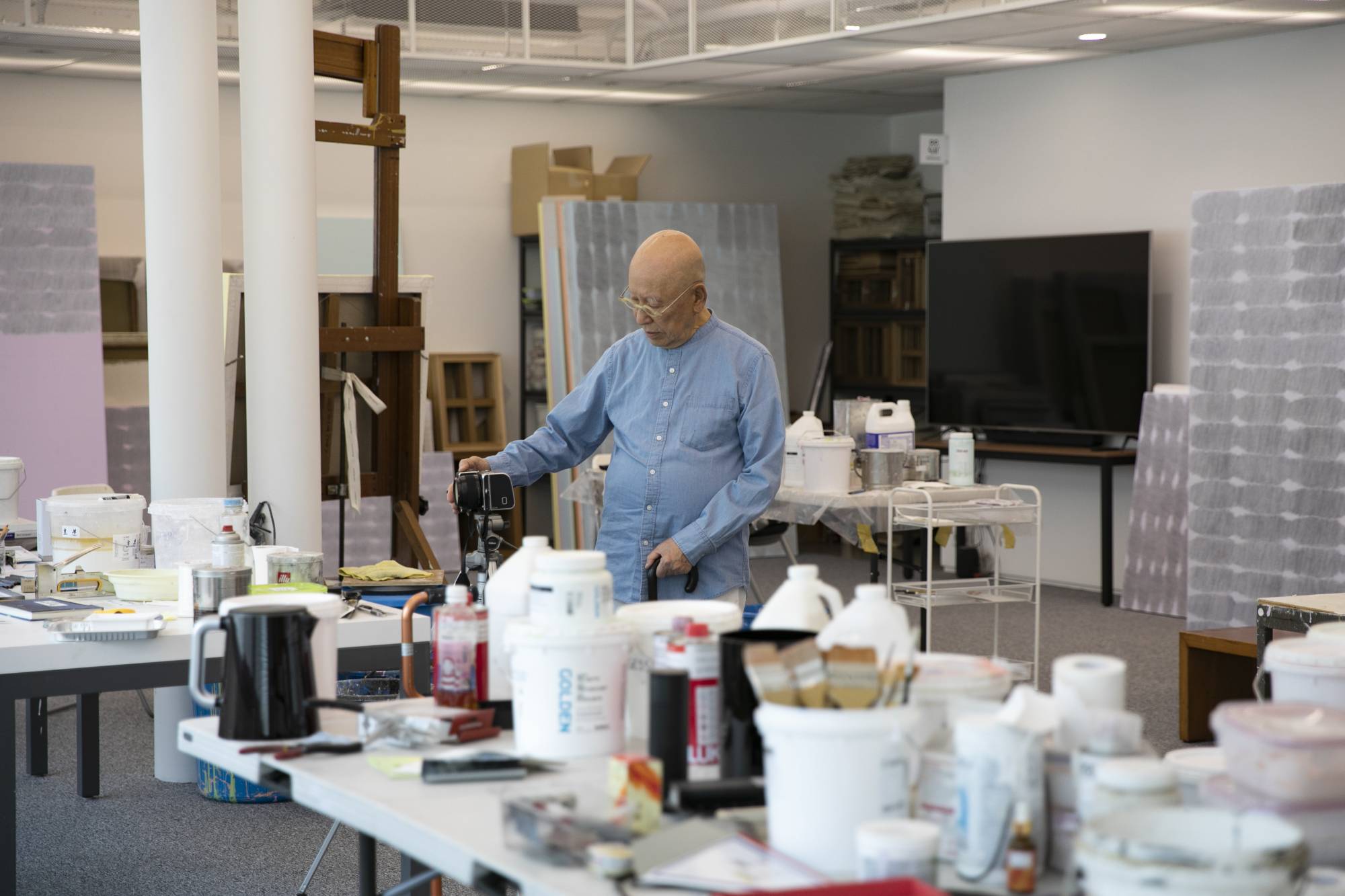In 1951, as the Korean War dragged on, a young artist named Park Jae-Hong headed toward Seoul. The conflict had cut short his first year at art school, and he had been forced into service, first by the North, then by the South, stationed in coastal Masan. He had survived aircraft attacks, meager rations, bitter cold — and had managed to get discharged. Back in the capital, trying to raise tuition money, Park asked soldiers from the United States if he could do their portraits. He traded their dollars for won — Korea’s currency — and bought art supplies and congee made with leftovers from military bases. "One cup of that and a glass of soju, and I would be very happy,” he recalled, through a translator, during a recent afternoon visit.
A pink scarf wrapped around his neck, Park was sitting in the Gizi, a sprawling residence, workspace and gallery in Seoul where he has lived with family since 2018. Some of his works — radiantly colored abstractions vibrating with thin lines — hung nearby. Today he is a "figure of towering influence, as a teacher and as an artist,” said Alexandra Munroe, the Guggenheim Museum’s senior curator for Asian art. In November he will turn 90.
Though Park walks with an elegant wooden cane, he was full of energy as he sipped tea and uncorked stories about his remarkable career as it nears new milestones. After a spring show at White Cube in London, he has more on deck, at Kukje Gallery in Seoul, Tokyo Gallery+BTAP in Japan and Chateau La Coste in Provence. An English translation of a moving biography by his daughter is out, and he is seeing through not one but two museums of his art in South Korea.


















With your current subscription plan you can comment on stories. However, before writing your first comment, please create a display name in the Profile section of your subscriber account page.